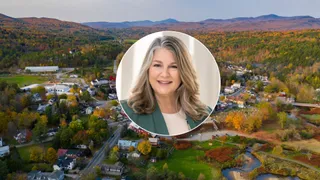.png/r%5Bwidth%5D=320/91feb200-7820-11f0-bd71-1bdaa11e6164-Climate%20Risks%20(1).webp)
Captives take centre stage in managing climate and cat risk
Captive insurers can become key to helping organisations navigate rising climate volatility, natural catastrophe risks, and the energy transition, a panel of industry leaders agreed, in a debate, which took place at the Vermont Captive Insurance Association conference, taking place in Burlington, Vermont, this week.
Moderated by Daniel Raizman, managing director, Climate Risk Advisory, Aon, the session also featured Andrew Baillie, director, Global Insurance, AES Global Insurance Company, and Kevin Kachur, insurance operations director, Marathon Petroleum Corporation.
By way of an example, Kachur described the difficulty of buying sufficient windstorm cover for Gulf Coast refineries in a market wary of natural catastrophe losses. With sub-limits in place, Marathon leans on its captive to retain risk, bolster negotiating leverage, and reward proactive resilience measures. These include hurricane-proof control centres, elevated pumps, and strengthened emergency response capabilities.
Baillie highlighted a shift in engineering focus for renewables—addressing flood, hail, wildfire, and wind threats through site selection, panel design, and defensible space. However, cost constraints often limit resilience investments, even when engineering studies recommend them.
Both speakers stressed captives’ role as a long-term hedge against shrinking commercial market capacity, particularly for fossil fuel risks. Building capital reserves today allows companies to self-insure more in future, avoiding last-minute market scrambles.
On catastrophe modelling, Baillie warned that incomplete historical data—especially for newly developed sites—limits predictive accuracy. Kachur noted that unpredictability makes captive preparedness essential.
While both companies have explored parametric covers, neither sees them as core solutions, citing payout uncertainty and limited limits. Baillie noted AES used parametric insurance in Puerto Rico to secure US government funding for a solar project when traditional capacity was unavailable.
Public funding for corporates after disasters remains rare, and potential cuts to federal weather data programmes could increase modelling inconsistencies.
Marathon is on track to meet its 2030 emissions reduction target ahead of schedule and is cutting refinery water usage. AES continues to phase out coal, but in some regions, grid reliability requirements have delayed retirements.
The panel flagged risks tied to the rapid growth of data centres, which demand round-the-clock power. Baillie raised concerns about supply obligations, technology risk, and the challenge of meeting AI-driven demand with renewables and current battery storage technology.
In a market where climate risks are intensifying and insurance capacity is tightening, captives offer flexibility, control, and resilience. As Baillie summed up, the aim is simple: make assets as resilient as possible—while accepting that in some scenarios, nature will have the last word.
Celebrate 40 Years of VCIA!
As the captive community gathers in Burlington for the VCIA Annual Conference, explore our special 40th Anniversary Edition. Packed with exclusive interviews, regulator insights, and reflections from industry leaders, it’s a tribute to four decades of innovation, connection, and leadership in Vermont’s captive market.
Read this Special Edition now.
Did you get value from this story? Sign up to our free daily newsletters and get stories like this sent straight to your inbox.

